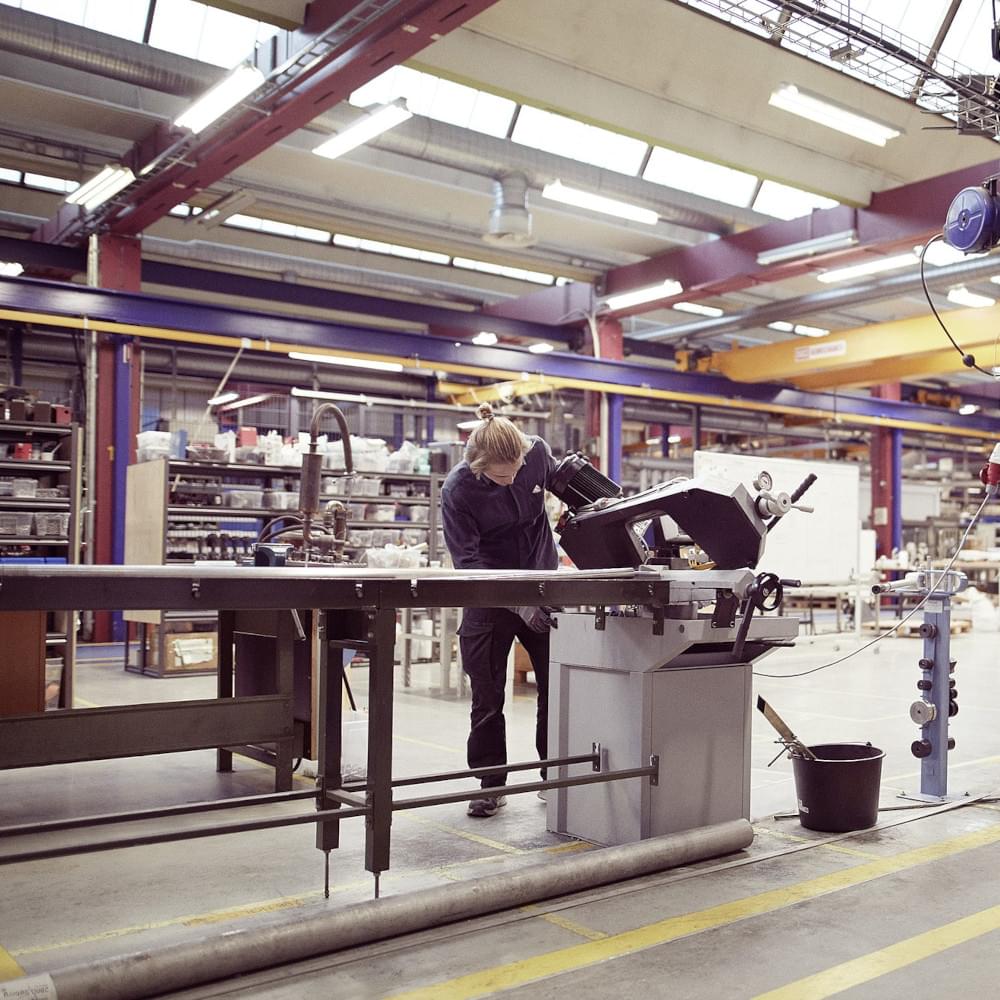A scientist is now aiming to prove that The Matrix is based on fact, and that the simulation we live in can be hacked.



Israeli scientists are aiming to produce the world’s first preventative drug designed to stop tumors causing secondary cancer, and say the active ingredient has shown more than 90 percent effectiveness in mice.
The Bar Ilan University research team produced a peptide — a chain of amino acids — made to stop cancer cells from entering the blood and therefore halting them from moving around the body.
They have published peer-reviewed research showing that it successfully prevented metastasis in mice, meaning it prevented the spread of diseased cells that can cause secondary cancer.

Researchers look at DNA of lab mice and ultimately reverse ageing process Related: Empowered Aging Scientists have made a new discovery about how to reverse the ageing process through looking at the way in which cells in DNA are organised. In a new study published in Cell, David Sinclair, who is a professor of genetics at Harvard Medical School, and his team described how they looked at a genome, which is called epigenome, in mice to study the ageing process.
We live in an era of renewed space exploration, where multiple agencies are planning to send astronauts to the Moon in the coming years. This will be followed in the next decade with crewed missions to Mars by NASA and China, who may be joined by other nations before long. These and other missions that will take astronauts beyond Low Earth Orbit (LEO) and the Earth-Moon system require new technologies, ranging from life support and radiation shielding to power and propulsion. And when it comes to the latter, Nuclear Thermal and Nuclear Electric Propulsion (NTP/NEP) is a top contender!
NASA and the Soviet space program spent decades researching nuclear propulsion during the Space Race. A few years ago, NASA reignited its nuclear program for the purpose of developing bimodal nuclear propulsion – a two-part system consisting of an NTP and NEP element – that could enable transits to Mars in 100 days. As part of the NASA Innovative Advanced Concepts (NIAC) program for 2023, NASA selected a nuclear concept for Phase I development. This new class of bimodal nuclear propulsion system uses a “wave rotor topping cycle” and could reduce transit times to Mars to just 45 days.
The proposal, titled “Bimodal NTP/NEP with a Wave Rotor Topping Cycle,” was put forward by Prof. Ryan Gosse, the Hypersonics Program Area Lead at the University of Florida and a member of the Florida Applied Research in Engineering (FLARE) team. Gosse’s proposal is one of 14 selected by the NAIC this year for Phase I development, which includes a $12,500 grant to assist in maturing the technology and methods involved. Other proposals included innovative sensors, instruments, manufacturing techniques, power systems, and more.
Claiming a system-level energy density 5X higher than batteries, Amogy has rolled out “the world’s first ammonia-powered, zero-emission semi truck.” It holds about 900 kWh of energy, like the Tesla Semi, but you can refuel it in about eight minutes.

The Ford Mustang Mach-E is being transformed into an electric hearse courtesy of Coleman Milne, giving you a silent way to go to the great beyond. But not wanting to leave out the living, the specialty vehicle manufacturer has also revealed plans for a Mustang Mach-E limousine.
This is not the first time Coleman Milne has dabbled in electric hearses, previously turning a Tesla Model S into a chariot of the dearly departed called the Whisper hearse, but the company claims it will be doing more of this sort of thing heading into 2023, with the Mach-E also forming the foundation of an electric limousine — another concept we’re no strangers to but will have to get used to in coming years.

Certain T cells can secrete cytokines that are normally part of the innate immune system, as researchers from the Leibniz Institute for Natural Product Research and Infection Biology (Leibniz-HKI) and an international research team discovered. They have thus revealed several previously unknown properties of these immune cells that are relevant regarding both autoimmune diseases as well as fighting fungal infections. The study was published in Nature Immunology.
T cells belong to the adaptive immune system, which recognizes foreign antigens and specifically fights pathogens. Different T cells perform different functions in this process. So-called T helper cells secrete cytokines that attract other immune cells to the site of infection and trigger inflammation there. However, T helper cells can also counteract inflammation. Better understanding these mechanisms helps in the development of therapeutics against pathogens or autoimmune diseases.
“We found a cytokine in a subset of T helper cells, the Th17 cells, that was previously known to be part of the innate immune system,” explains study leader Christina Zielinski. She heads the Department of Infection Immunology at Leibniz-HKI and is a professor at Friedrich Schiller University in Jena. The cytokine, called IL-1α, is strongly pro-inflammatory. “It is a signal molecule for danger. Even the smallest amounts are enough to trigger fever,” Zielinski said. It is thought to be involved in autoimmune diseases such as rheumatoid arthritis in children.
We’ve all seen Cyborgs in Hollywood blockbusters. But it turns out these fictional beings aren’t so far-fetched. In fact, this program features a true-to-life cyborg, who at four months of age, was the youngest American to be outfitted with a myoelectric hand. And at one ground-breaking engineering.
facility, engineers are developing biotechnologies that can even further enhance high-tech like this by giving mechanical prosthetics something incredible: the physical sensation of touch!
SUBSCRIBE for more amazing stories, including free FULL documentaries. At Java Films we have an incredible library of award-winning documentaries: from world-leading investigations to true crime and history, we have something for everyone!
Click the SUBSCRIBE button and make sure to set NOTIFICATIONS to stay updated with all new content!
Sign up to the Java Films Clubs for exclusive deals and discounts for amazing documentaries — find out first about FREE FULL docs: http://eepurl.com/hhNC69
Head to https://www.watchjavafilms.tv/ to check out our catalogue of documentaries available on Demand.
You can also find our docs on :
Amazon Prime Video: https://www.amazon.com/v/javafilms?tag=lifeboatfound-20.
Vimeo On Demand: https://vimeo.com/javafilms/vod_pages.
Like us on Facebook: https://www.facebook.com/JavaFilms/

Check out all the on-demand sessions from the Intelligent Security Summit here.
For years, encryption has played a core role in securing enterprise data. However, as quantum computers become more advanced, traditional encryption solutions and public-key cryptography (PKC) standards, which enterprise and consumer vendors rely on to secure their products, are at serious risk of decryption.
Today, IBM Institute for Business Value issued a new report titled Security in the Quantum Era, examining the reality of quantum risk and the need for enterprise adoption of quantum-safe capabilities to safeguard the integrity of critical applications and infrastructure as the risk of decryption increases.

UK Atomics, a subsidiary of the company applied to the UK Department for Business, Energy and Industrial Strategy (BEIS) for a GDA by the Office for Nuclear Regulation (ONR) and the Environment Agency (EA). This assessment aims to assess the safety, security, and environmental protection aspects of any nuclear power plant design that is intended to be deployed in the UK.
In May 2021, BEIS opened the GDA process to advanced nuclear technologies, including small modular reactors (SMRs). Successful completion of the GDA culminates in the issue of a Design Acceptance Confirmation from the ONR and a Statement of Design Acceptability from the EA. Rolls-Royce SMR was the first vendor to submit an application for a GDA of an SMR design. Its 470 MWe pressurised water reactor design was accepted for review in March 2022. In December, GE Hitachi Nuclear Energy submitted a GDA entry application for its BWRX-300 SMR, and Holtec International has stated its intention to submit an application for its SMR-160 design.
UK Atomics molten salt reactor design uses unpressurised heavy water as a moderator, while the reactor is intended to burn nuclear waste while breeding new fuel from thorium. The company says, with an output of 100 MWt, it is small enough to allow for mass manufacturing and assembly line production.